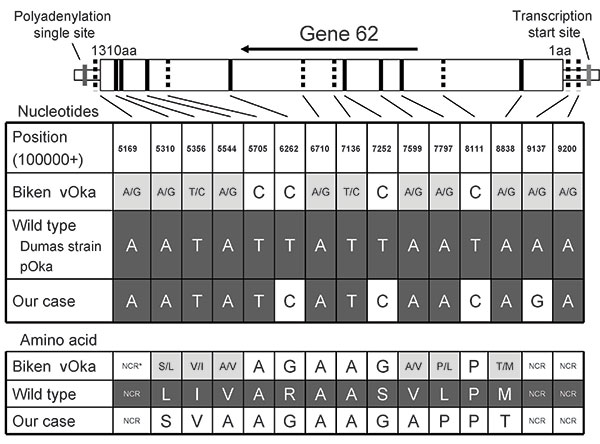Volume 15, Number 10—October 2009
Letter
Transmission of Varicella Vaccine Virus, Japan
Figure

Figure. Sequence of gene 62 from patient with varicella from secondary transmission of Oka vaccine strain (vOka). The diagram at the top shows the structure of gene 62. Amino acid residues are numbered 1–1310 from the amino terminus to the carboxyl terminus. Vertical lines indicate the positions of 15-nt base differences between vOka (GenBank accession no. AB097932) and parental (pOka, accession no. AB097933) strains. The 15 boldface and broken lines show substitutions with and without amino acid (aa) alterations, respectively. The charts show a comparison of the gene 62 sequences among vOka, pOka, Dumas (accession no. X04370), and the strain isolated from the secondary case-patient (accession no. AB497598). The black, white, and gray boxes denote pOka-type substitutions, vOka-type substitutions, and mixed-type substitutions (mixture of pOka and vOka nucleotides), respectively. NCR, noncoding region.